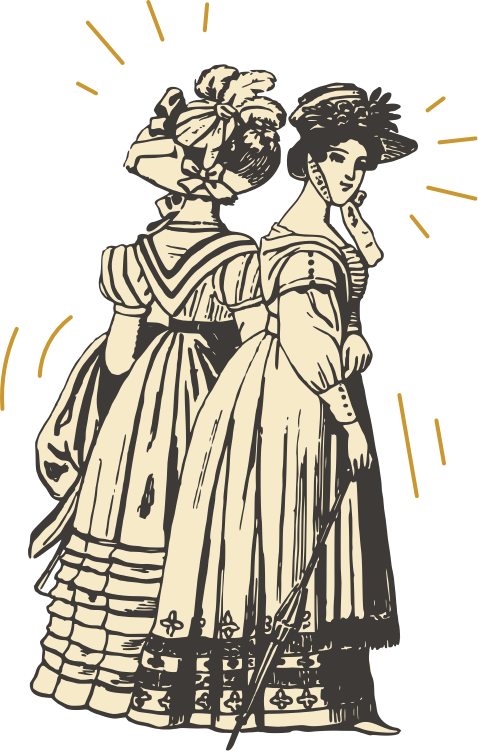Warm Up Before Your Valentine’s Day Scavenger Hunts
In celebration of Cupid’s Birthday or whatever, seek out sultry secrets about scandalous art on our popular Naked at the Art Museum Scavenger Hunts. You and your significant other or friends can explore museums in New York, Chicago, Los Angeles, Philadelphia, or Washington, D.C., for some of the finest and flirtiest nude art in history.
Whether you want to see what you’re in for, or simply get to know the naughty side of great works of art, test your wits on these preview questions. Some are from our Valentine’s Day scavenger hunts, while others are inspired by great moments in nude art history.
1. Oh My, Manet!
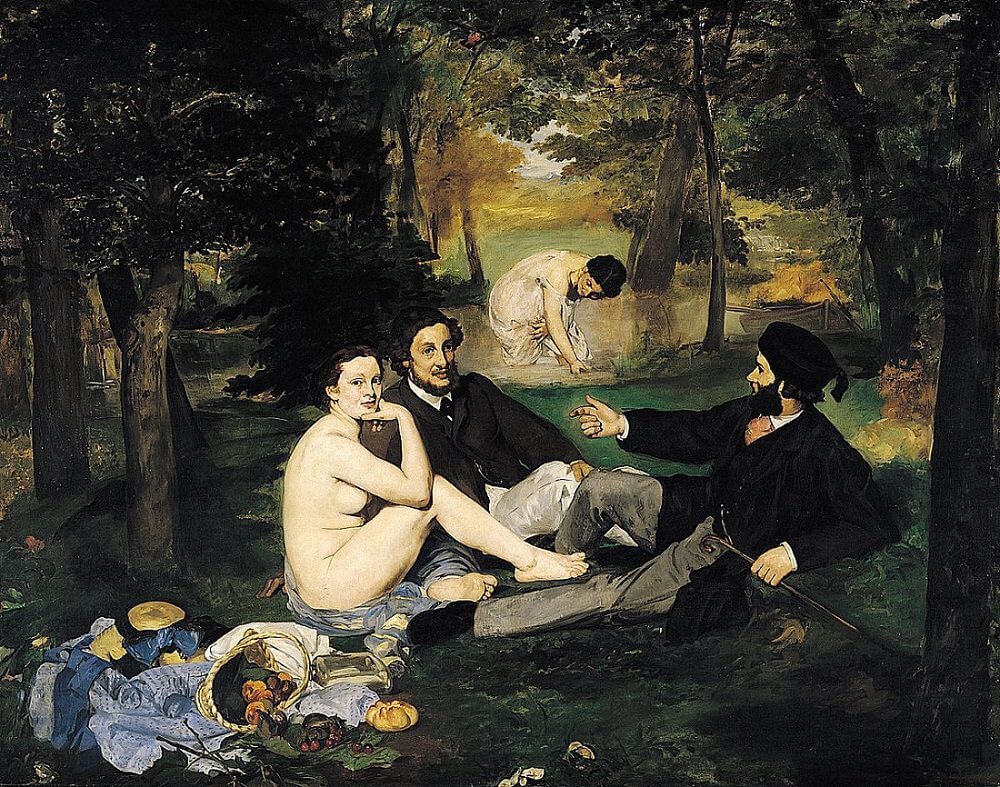
Manet’s The Luncheon on the Grass created a huge uproar when it was first shown in 1863. The fact that one of the women is depicted naked did bother people. But what about the painting upset those people even more?
Critics were scandalized that the men in Luncheon on the Grass were wearing clothes while one woman was not.
2. Think About It
Rodin originally conceived his famous male nude sculpture as Dante before the Gates of Hell, thinking about his great poem. Who is that figure known as?
3. On Second Thought
One of this artist‘’‘s most famous works originally depicted five prostitutes and two men in a brothel. He eventually painted over the clients, leaving only the women. What 20th-century artist painted this ground-breaking scene?
Pablo Picasso painted—and then revised—Les Demoiselles d’Avignon.
4. Suffering for His Art
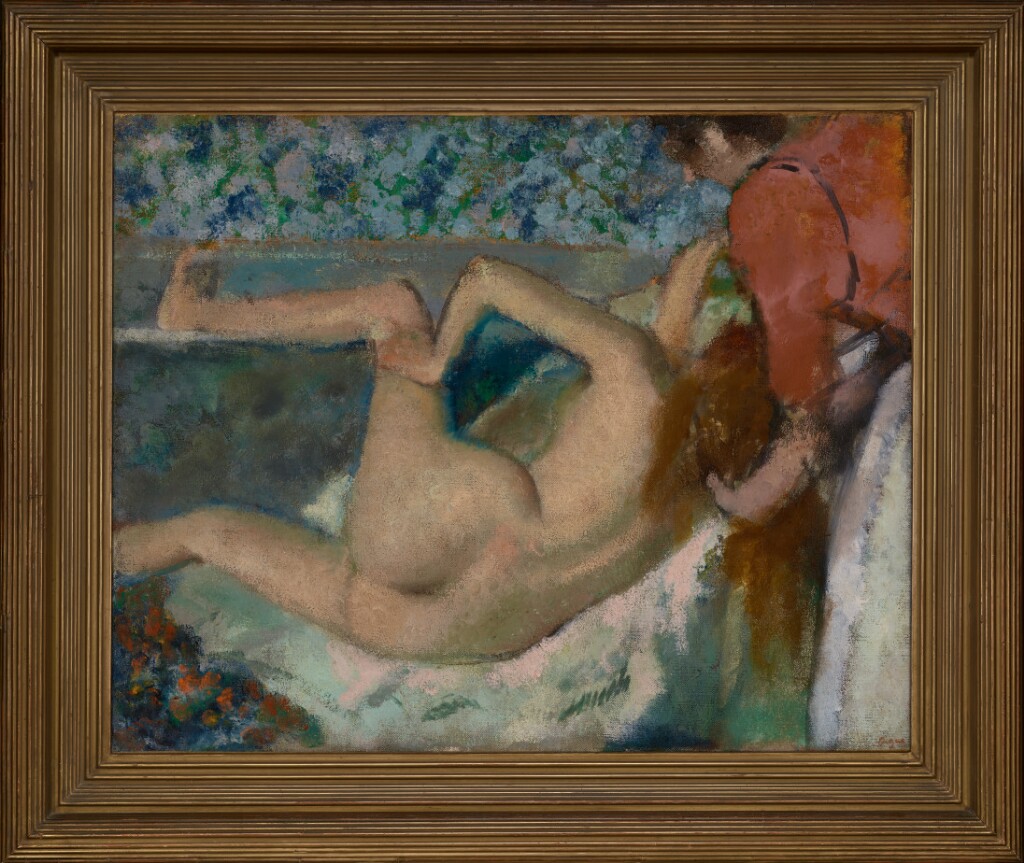
Renoir is famous for his Impressionist nudes, including the eternally awkward After the Bath. Afflicted with arthritis late in life, he remained determined to keep painting. What did he do with his paintbrushes in order to make that happen?
He strapped them to his forearms!
5. Armory Uproar
Painted in an avant-garde style, Marcel Duchamp’s most famous nude caused scandal and ridicule in its American debut at the 1913 Armory show in New York City. The New York Times, for example, said it ought to be titled “Explosion in a Shingle Factory.” What entirely mundane activity is the subject doing in the painting?
Walking down the stairs: the painting in question is Nude Descending a Staircase (No. 2). Even that title drew criticism. Duchamp’s brothers begged him to change it, and a committee that refused to show the painting declared, “A nude never descends the stairs—a nude reclines.”
6. It’s a Living
Contemporary artist Daniel Edwards, famous for sculpting things such as Suri Cruise‘s first poop and a naked Britney Spears giving birth, immortalized a young (and now long defunct) pop couple in the buff in 2011. Who were the two pop stars?
Selena Gomez and Justin Bieber: Edwards’ Justin and Selena As One depicts the pair as a sort of pop-culture Adam and Eve.
7. Freaky Eakins
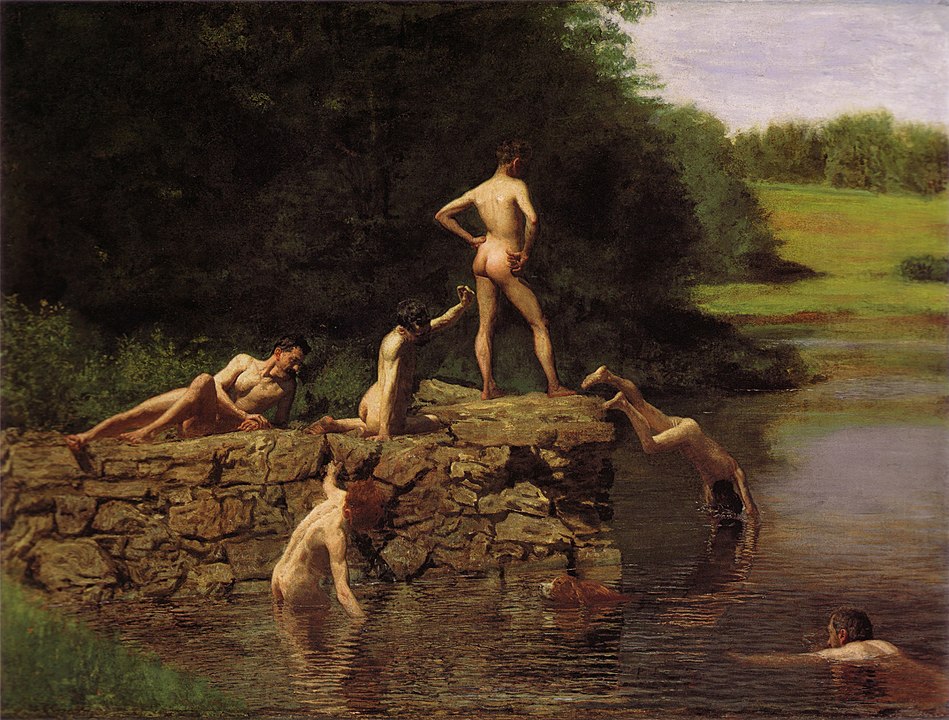
Artist Thomas Eakins made a name for himself with such clothing optional work as The Swimming Hole. But he could be a bit too risqué for his own good—for example, he’s in The Swimming Hole, on the lower right, swimming toward his dog. What shocking activity got him dismissed from his teaching gig at the Pennsylvania Academy of the Fine Arts in 1886?
A. He removed the loincloth from a male model in a class with female students.
B. He posed in the nude for photographs taken by his students.
C. He encouraged students to photograph each other in the nude.
D. He kept painting fig leaves on nude art in the Academy’s art collection.
In fact, he did both B and C, but finally got sacked for A.
8. Going Ape
In 1989, a group of anonymous artists and activists called the Guerilla Girls caused a stir with their now famous poster, Do women have to be naked to get into the Met. Museum? It decried the severe lack of female artists on display at the Metropolitan Museum of Art (and in the art world in general) while calling out the plethora of nude women painted by men. The Public Art Fund in New York City refused to display the work at the time, so the Guerilla Girls paid to display it as ads on New York City buses and in subway cars.
True or False: This piece has never been displayed in the Met Museum, its intended target.
False: It might have taken about three decades, but this poster did appear in the Met as part of a 2021 exhibition titled “Selections from the Department of Drawings and Prints: Revolution, Resistance, and Activism.”
9. Uproar in Paris
The Italian painter Amedeo Modigliani is perhaps best known for his Reclining Nude, but his numerous nude works caused quite a stir in the early 20th century. In particular, his Female Nude was so scandalous for its depiction of pubic hair—an absolute taboo at the time—that it got his one and only solo exhibition in 1917 shut down by the police.
But something else about Female Nude offended contemporary viewers as well. What was it?
A. Her dreamy pose
B. Her makeup
C. Her non-European features
D. Her appearing to be asleep
C. Her non-European features: The elongated, angular dimensions of her head showed similarities to Egyptian, African, and Oceanic sculptures Modigliani had studied. Her looking not entirely white and European really bothered some of the white Europeans who attended the exhibition.
10. What-Based Paint?
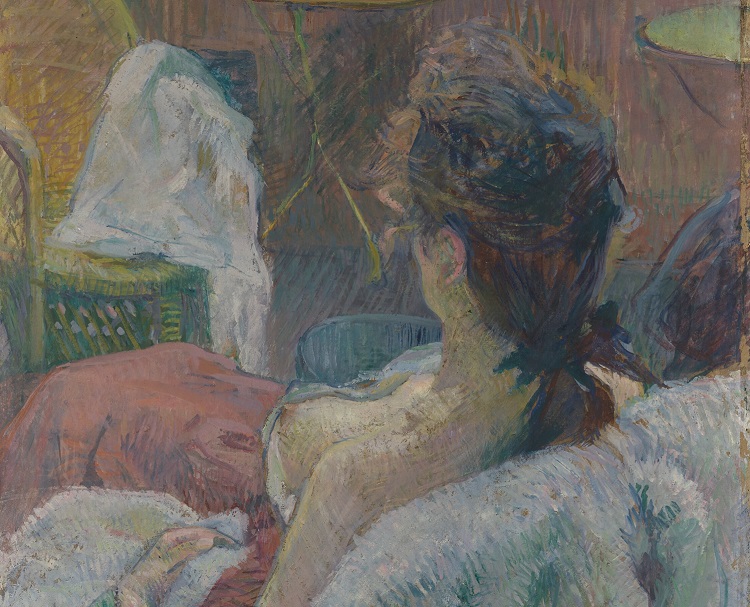
The post-impressionist Henri de Toulouse-Lautrec liked to paint in brothels. Much of his work recording bohemian lifestyles in late 1800s Paris, including his, er, busty The Model Resting, featured or were inspired by those brothels’ workers. Notably, he used a particular type of paint in his works. What was it?
For many of his nude paintings, Toulouse-Lautrec used casein, a milk-based paint. Paging Dr. Freud…
11. Not So Pristine in the Sistine
Today, Michelangelo’s frescoes in the Sistine Chapel are considered some of the finest art in history. But the section dubbed The Last Judgment caused an uproar that lasted centuries. It depicts Jesus surrounded by lots and lots of naked people, including saints and martyrs, and that horrified viewers at the time. After Michelangelo’s death, dozens of figures were repainted to wear clothes, drapery, and fig leaves—partly to save it from the Council of Trent, a body in the Catholic Church that policed art.
The controversy was more or less settled in the 1980s, when the final fate of all the added coverings was decided. What happened to them?
Nothing! The Last Judgment‘s revisions have been left in, in part because they represent a historic moment in the censorship of art. (The fact that they helped save the fresco from the Council of Trent’s wrath didn’t hurt.)
12. Art to Di For
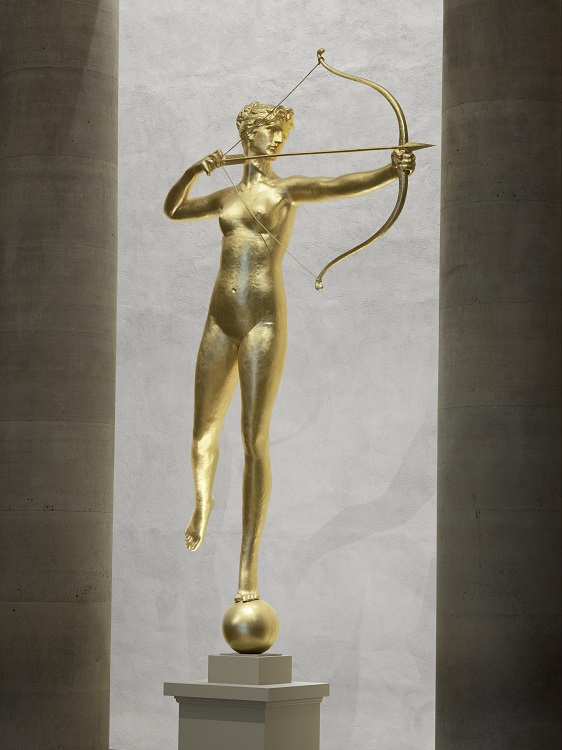
At the top of the grand staircase at the Philadelphia Museum of Art looms a larger-than-life sculpture of the goddess Diana, by August Saint-Gaudens. Smaller versions can be found in the Metropolitan Museum of Art and the National Gallery of Art. While her frank nakedness shocked some Victorian viewers, Stanford White, architect of the original Madison Square Garden in New York City, placed her atop his towering creation as part of a weather vane.
And then one evening in 1906, White was shot to death at the Garden, under the very roof Diana adorned, by the enraged husband of his mistress, Evelyn Nesbit. True or false: The killer husband was enraged because his wife, Evelyn, was the model for White’s beloved Diana sculpture.
False: Diana was sculpted when Evelyn would have been about 9 years old.
However, the novel and musical Ragtime, inspired by the events surrounding White’s murder, fudge the facts. They suggest that an aged-up Evelyn Nesbitt (this time with two Ts) did indeed pose for Diana, which helped drive her husband to murder White.
13. We’d Like a Table for 39, Please
Judy Chicago’s The Dinner Party outraged viewers when it debuted in 1980. Paying homage to hundreds of powerful women throughout history, the piece features 39 distinct place settings, each one bearing (and baring) an artistic representation of female genitalia. The Dinner Party‘s planned nationwide tour was sacked amid the furor, and it took decades for the massive installation to find a permanent home at the Brooklyn Museum’s Center for Feminist Art.
How many men are included in this piece?
One! The 999 names listed on the tiled porcelain floor of The Dinner Party include “Cresilla,” whom Chicago thought to be a female artist from ancient Greece. But that person was actually Kresilas, a male artist from ancient Greece. At least he’s partying in good company.
14. Shark Attack
Around 1778, 14-year-old sailor Brook Watson (no relation) went skinny dipping near his ship when a shark attacked him. It took two good chomps before his shipmates pulled him from the brine. John Singleton Copley immortalized the scene in Watson and the Shark. The work still manages to shock, as the frantic rescuers fight off the monster shark while Watson floats, pale in his “birthday swimsuit,” inches from an array of serrated teeth.
In later life, when the now peg-legged Watson created his family crest, what did he include to memorialize the incident?
A. a severed foot
B. a shark fin
C. the name of the boat that saved him
D. a movie poster from Jaws
A. a severed foot! At least the shark didn’t bite off his sense of humor.
Find More Fun
To explore even more of the finest and flirtiest nude art in history, join a Naked at the Art Museum Scavenger Hunt. These Valentine’s Day scavenger hunts are available in New York, Chicago, Los Angeles, Philadelphia, and Washington, D.C.
~
Images credits: All artworks in the public domain
